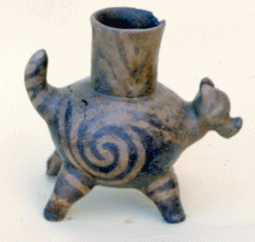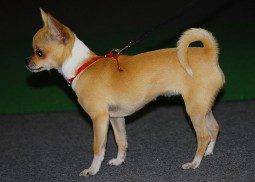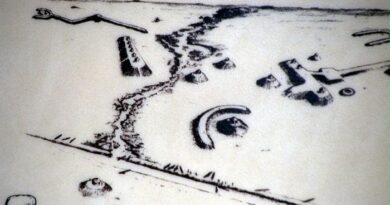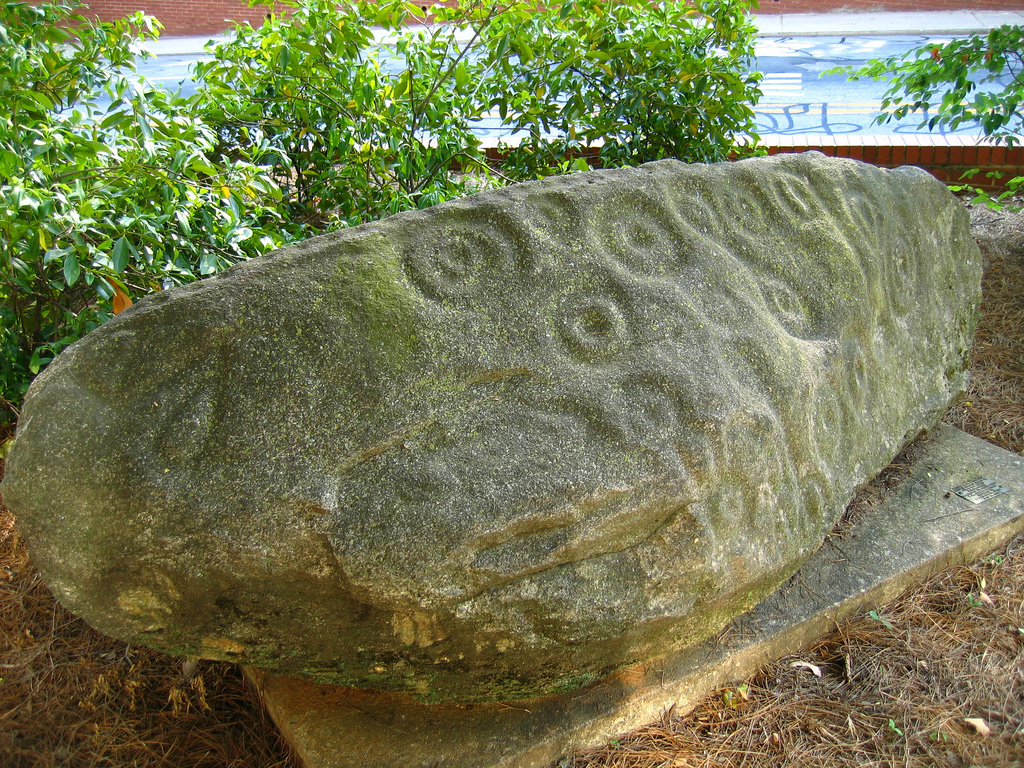Ancient Chihuahuas in Southeastern U.S.?
Description of Burials with Dog Pots
The dog pots were found in three separate burials at the Bull Creek site: burials 3, 7 & 16. Descriptions of the three burials from the report are as follows:
Burial # 3
“May 27-June 2. At a depth of approximately 5’, an effigy pot was found in the shape of a dog- painted ware. The pot is unbroken and is an exceptional piece of ware. The “dog” is complete, with eyes, nose, ears, four feet and short stubby tail. The pot is part of the furniture with a burial, found just below the pot. The body is face downward, and have only found one arm.”3
Burial # 7
“June 30th to July 3rd. Burial #7 has with it another of the dog effigy painted pots. This pot however, is rather badly broken, the neck being found down on the pot itself, and the head and three of the feet broken off- all parts are in place though, and the vessel can be restored to its original shape. From all appearances the pot is an exact duplicate of the one found with burial #3. There is also a small greenstone discoidal stone as burial furniture; the stone is perfectly smooth and round, about 1 1/2” in diameter and about 5/8” thick, in the middle.”4
“July 27 to 30. July 27 Moved skeleton from M&M Bank. July 28 to 30 Troweled out burials exposed and began cleaning excavations. Found a dog-effigy type 7” S. sta. 4-15L5, 32” E. 70” below surface, 36” deep in tan sand. Pot is slightly different from other two in that neck design is slightly different, neck being higher and smaller. Body of pot painted red with black design. Vessel in perfect state of preservation except that end of dog’s tail broken off and one leg loose, but in place. The legs are slightly longer and place at a slightly different angle.”5
Burial # 16
“Burial #16 consists of a few fragments of tibia and femora, bones are scattered over a large area and is really the remains of two bodies; general orientation is south southwest and north northeast. Burial furniture consists of the 3rd effigy dog vessel. 36” below occupation level.”6
Breed Analysis of the Dog Effigy Pots
No attempt was made by the archaeologists to analyze the breed of dog represented by the dog pots. The first such attempt was made in my paper “West Mexico Cultural Traditions at Mississippian Period Sites in Georgia” which stated that the breed of dog that most closely fits that represented by the Bull Creek dog pots is the Chihuahua.7 In this paper I again propose that the breed of dog most consistent with the features of these dog pots is the Mexican Chihuahua.
According to the American Kennel Club breed standard for the Chihuahua, the dogs should have:
“A well rounded “apple dome” skull, with or without molera. Expression – Saucy. Eyes – Full, round, but not protruding, balanced, set well apart… Ears – Large, erect type ears, held more upright when alert, but flaring to the sides at a 45 degree angle when in repose, giving breadth between the ears. Stop – Well defined. When viewed in profile, it forms a near 90 degree angle where muzzle joins skull. Muzzle – Moderately short, slightly pointed. Cheeks and jaws lean…Tail – Moderately long, carried sickle either up or out, or in a loop over the back with tip just touching the back.”8
The Bull Creek dog effigy pot’s upturned snout, bulbous “apple dome” forehead, erect ears and erect, curved tail are all consistent with the Chihuahua breed.
 |
 |
|
Dog Effigy Pot from Bull Creek Site (Courtesy Columbus Museum) |
Modern-day Chihuahua for comparison (Courtesy Wikipedia) |




Pingback: Looking Back in Time; Pre-Columbian Dog Breeds! | Daycare & Grooming Blog